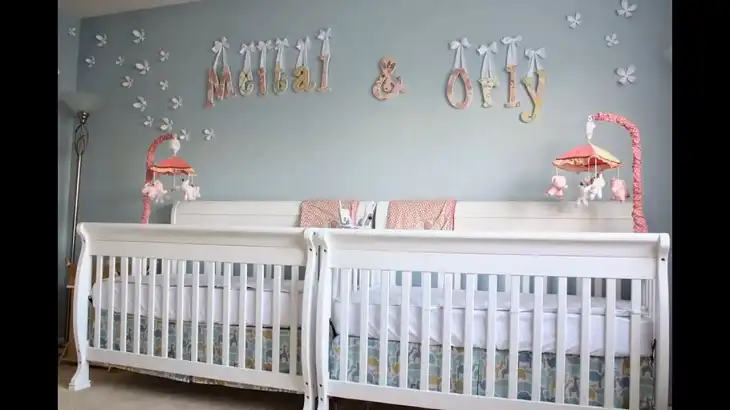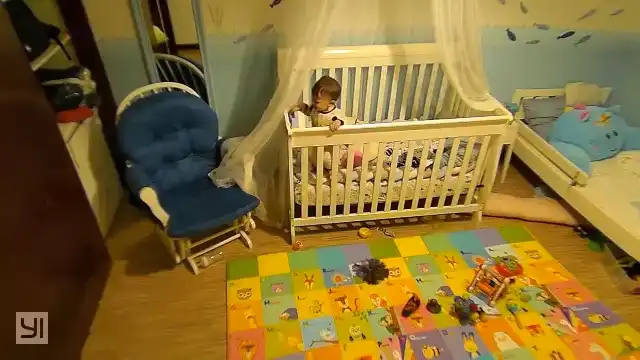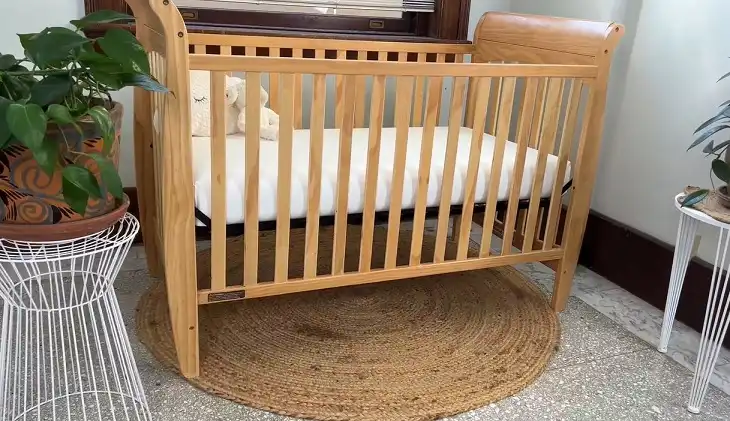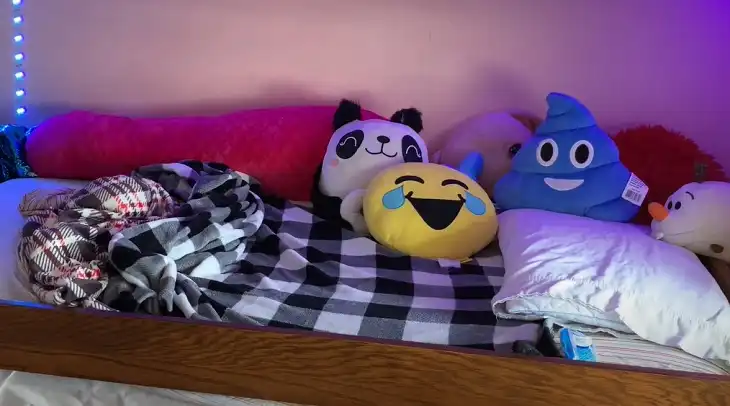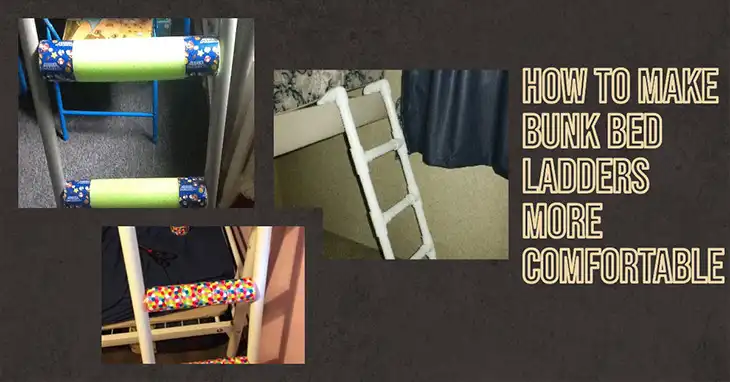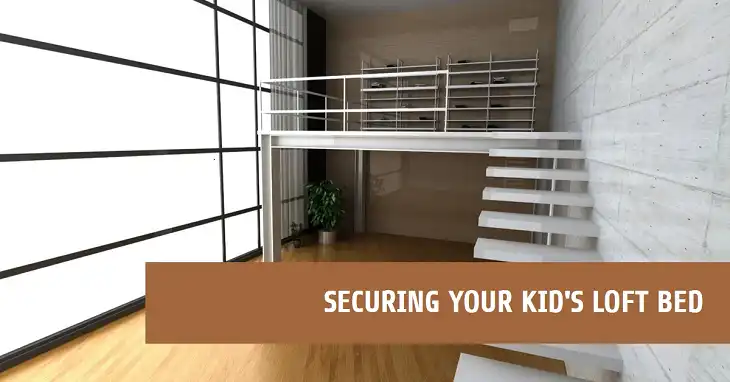How to Arrange Kids Bedroom Furniture on a Budget
Arranging kids’ bedroom furniture on a budget is not an easy task. With limited space and resources, it’s easy to feel overwhelmed by the number of options out there.
The good news is, with a little creativity and smart planning, you can create a delightful and organized bedroom for your kids without breaking the bank. The key is to prioritize functionality, maximize space, and incorporate personal touches that reflect your child’s personality.
In this guide, I’ll share budget-friendly tips and tricks to help you arrange your kids’ bedroom furniture like a pro. Get ready to transform that cluttered space into a charming and inviting haven where your little ones can play, sleep, and thrive. Let’s read below!
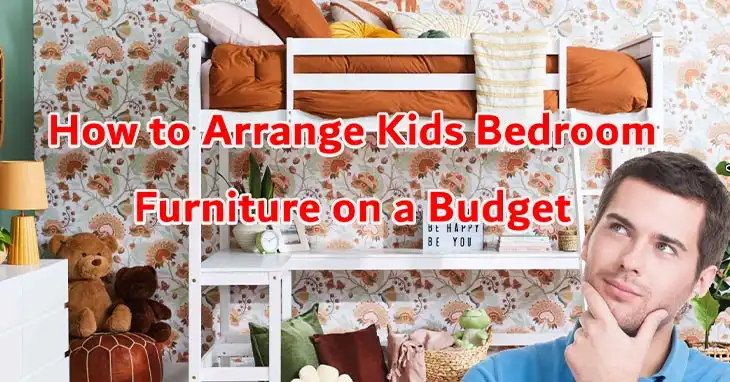
Tips to Arrange Kids Bedroom Furniture on a Budget
There are plenty of options out there to furnish your kids’ bedroom on a budget. What you have to do is –
be creative and find the right balance between functionality and style. Let’s follow the tips below to arrange it efficiently:
1. Choose an Exciting Theme
Consider choosing an exciting theme for your kid’s bedroom. It helps create a cohesive space and narrows down options when picking colors, furniture, and decorative items. A princess or pirate-themed room will delight kids who love to dress up and get lost in stories. Bring awe and wonder with a jungle or space-themed bedroom. You could use their hobby as inspiration, like dance or sports. Every kid has their favorite superhero, which would make a great theme too.
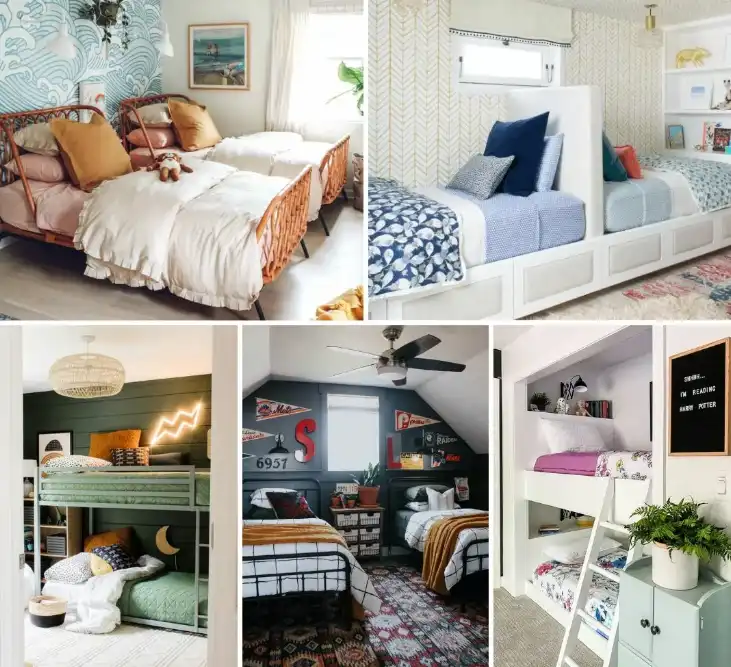
Once you’ve picked a theme, you can truly imagine what the results of your project will look like. However, keep in mind that children often change their interests, so consider themes with longevity or easy adaptability.
2. Measure Your Space and Needs
Before you start rearranging furniture or making any purchases, take a step back and assess your child’s bedroom. Measure the room’s dimensions and consider the following factors:
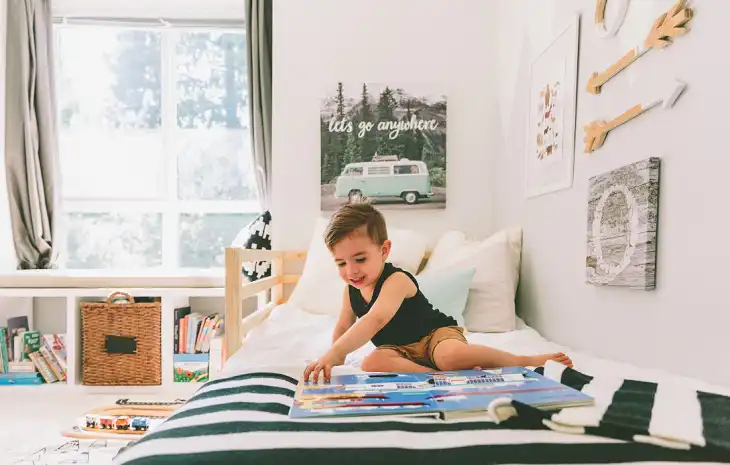
- Age and Size: As your child grows, their needs will change. Plan for a layout that can accommodate their current age and size, as well as their future needs.
- Activities: Determine how your child uses the space. Do they need a dedicated area for studying, playing, or storing toys? This will help you allocate different zones within the room.
- Storage Requirements: Kids tend to accumulate a lot of stuff, from clothes to toys and books. Evaluate your storage needs and look for multipurpose furniture that can serve dual functions.
- Natural Light: Position the bed and study area near windows to take advantage of natural light, which can create a calming and productive environment.
Once you’ve assessed your space and needs, create a rough sketch or layout plan to help visualize your ideal arrangement.
3. Use Multi-Functional Storage and Furniture
The importance of functionality can’t be forgotten in the excitement of fun ideas for your kid’s bedroom. When storing their mountain of toys and clothes in a limited space, multi-functional furniture is a lifesaver, especially if multiple children share a room.
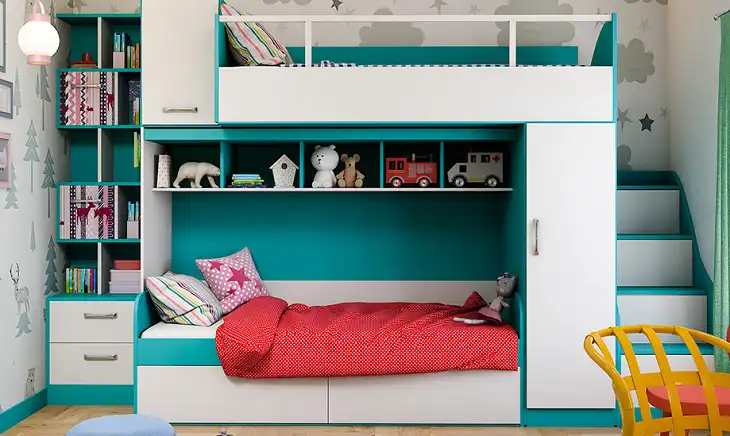
Some great examples include underbed storage, ottoman boxes, headboard storage, and beds with pull-out desks. These provide ample storage while maintaining a sleek, modern design. If you need a custom piece, consider hiring a professional carpenter to create your perfect multi-functional furniture.
4. Choose the Best Budget-Friendly Furniture
When working with a tight budget, investing in multipurpose furniture is a game-changer. Look for pieces that can serve multiple functions, such as:
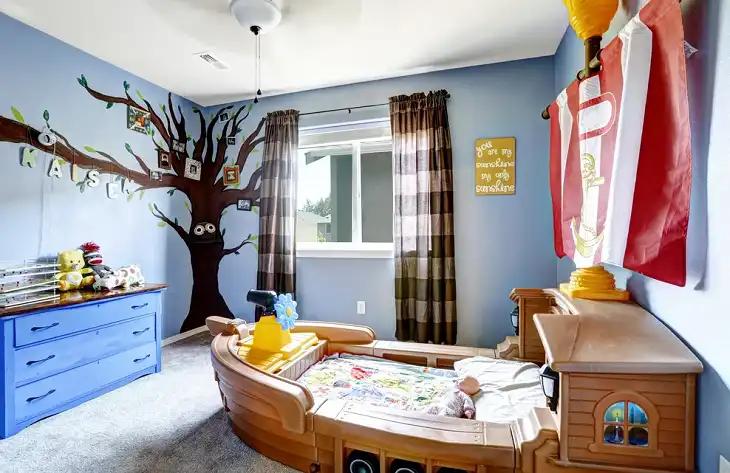
- Loft Beds: These space-savers combine a bed with a desk, shelving, or storage underneath, maximizing vertical space.
- Storage Ottomans: Not only do these provide extra seating, but they also offer hidden storage compartments for toys, blankets, or extra bedding.
- Convertible Cribs: As your child grows, convertible cribs can transform into toddler beds, saving you money in the long run.
- Wall-Mounted Desks: Foldable or wall-mounted desks are perfect for small bedrooms, providing a dedicated study space without taking up too much floor area.
- Modular Shelving Units: Customizable shelving units offer flexibility and can be rearranged as your child’s needs change.
Don’t be afraid to get creative and repurpose items you already own. An old dresser can become a TV stand or a nightstand, while a bookshelf can double as a room divider.
5. Utilize Space-Saving Solutions
In a small bedroom, every inch counts. Utilize these space-saving solutions to maximize your square footage:
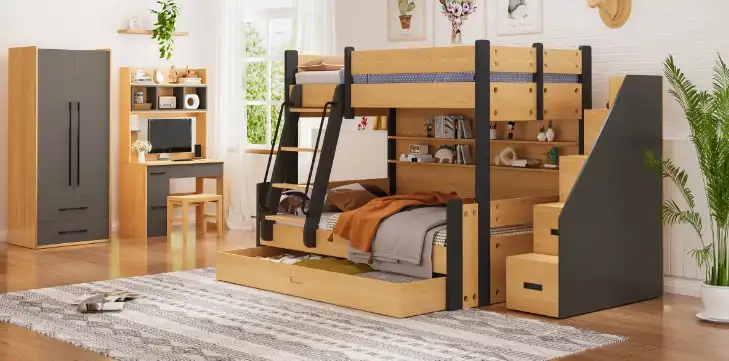
- Vertical Storage: Install shelving units, hanging organizers, or over-the-door racks to utilize vertical space for storing toys, books, and clothing.
- Under-Bed Storage: Invest in bed risers or underbed storage containers to create additional space for off-season clothing, extra blankets, or toys.
- Wall-Mounted Accessories: Instead of taking up floor space, opt for wall-mounted lamps, floating shelves, or hanging baskets for additional storage and organization.
- Dual-Purpose Furniture: Choose furniture pieces that serve multiple functions, such as a trundle bed with a built-in storage drawer or a desk with shelving above it.
- Declutter and Rotate Toys: Regularly declutter and rotate toys to keep the room tidy and organized. This will also help your child appreciate and play with their toys more mindfully.
6. Add Personal Touches
While sticking to a budget is essential, don’t forget to add personal touches that reflect your child’s personality and make the space feel like their own. Here are some budget-friendly ideas:
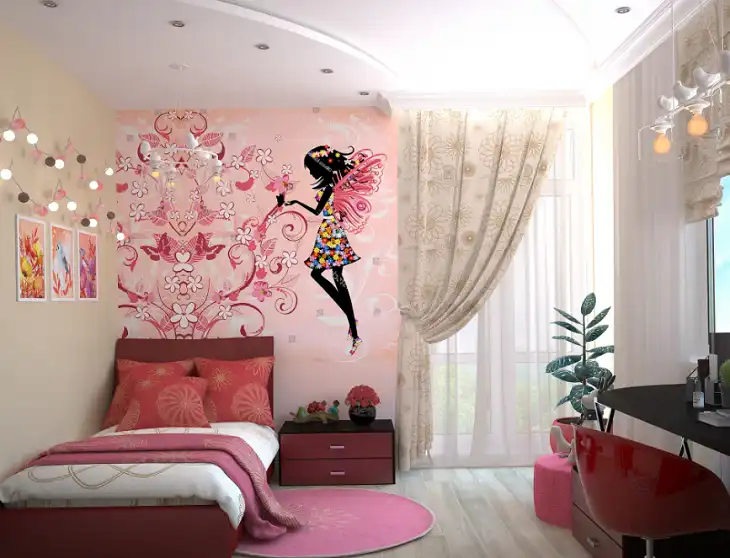
- Wall Art: Create a gallery wall using your child’s artwork, family photos, or inexpensive prints from online sources.
- DIY Decor: Get crafty and involve your child in making DIY decorations, such as painted wall hangings, pom-pom garlands, or personalized canvas art.
- Colorful Textiles: Breathe life into the room with vibrant bedding, curtains, or area rugs that match your child’s favorite colors or themes.
- Repurposed Items: Upcycle old items like crates, tin cans, or mason jars to create unique storage solutions or decorative pieces.
- Themed Accents: Incorporate your child’s favorite characters, animals, or hobbies through small accessories like throw pillows, lamps, or wall decals.
Remember, the key is to strike a balance between functionality and personality, creating a space that feels inviting and reflects your child’s unique interests.
Keep Safety in Mind
While arranging furniture and decorating on a budget, always prioritize safety. Here are some essential tips:
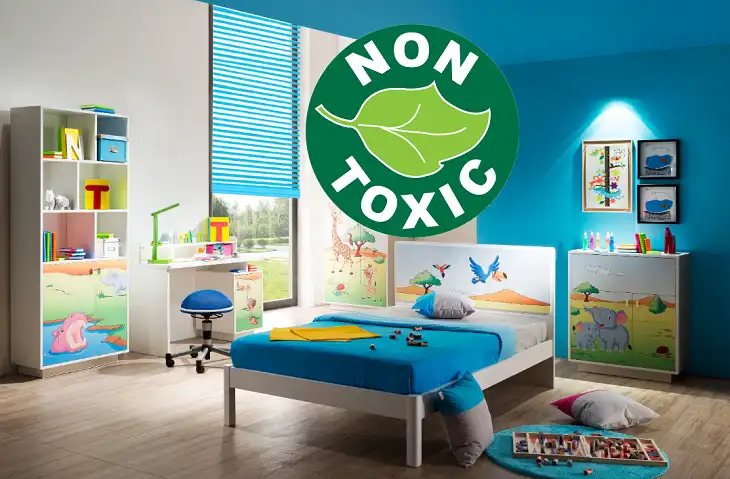
- Secure Furniture: Anchor tall dressers, bookcases, or shelving units to the wall to prevent tipping hazards.
- Clear Walkways: Ensure there are clear pathways and no tripping hazards, such as loose rugs or exposed cords.
- Choose Non-Toxic Materials: When shopping for furniture or decor, opt for non-toxic and eco-friendly materials to create a healthy environment for your child.
- Install Safety Gates: If your child’s bedroom is on a different level, install safety gates at the top and bottom of staircases.
- Avoid Small Choking Hazards: Be mindful of small decorative items or toys that could pose a choking risk for younger children.
By incorporating safety measures into your design, you can create a functional and comfortable space while ensuring your child’s well-being.
Summary
Creating a delightful and organized kids’ bedroom on a budget is entirely possible with careful planning and creativity. By assessing your space and needs, prioritizing multipurpose furniture, embracing space-saving solutions, and adding personal touches, you can transform your child’s room into a cozy and inviting haven. If you have any additional questions or need further guidance, feel free to leave a comment below. We’re always happy to help fellow parents create the best possible living spaces for their little ones. Wishing you all the best in your budget-friendly bedroom makeover!
People Also Asked
What Is the Best Layout for a Small Kids’ Bedroom?
For small bedrooms, consider a layout that incorporates multipurpose furniture, such as a loft bed with a desk or storage underneath. Utilize vertical space with wall-mounted shelves and hanging organizers, and keep the floor area clear for play.
How Can I Create Storage Solutions on a Budget?
Get creative with budget-friendly storage solutions like repurposed crates, baskets, or fabric bins. Install wall-mounted shelves or hanging organizers to maximize vertical space. Look for multipurpose furniture with built-in storage compartments.
What Are Some Affordable Decorating Ideas for Kids’ Bedrooms?
Involve your child in DIY projects like creating wall art with their artwork, painting canvas wall hangings, or making pom-pom garlands. Use inexpensive textiles like curtains, rugs, or throw pillows to add pops of color and personality.
How Can I Ensure Safety in a Kids’ Bedroom?
Anchor tall furniture to the wall, clear walkways of tripping hazards, choose non-toxic materials, install safety gates if needed, and remove small choking hazards. Regularly check for potential safety concerns and make adjustments as your child grows.
What Should I Consider When Shopping for Kids’ Bedroom Furniture on a Budget?
Look for multipurpose pieces that can grow with your child, such as convertible cribs or loft beds. Consider secondhand or hand-me-down furniture, and don’t be afraid to repurpose or upcycle items you already own.

